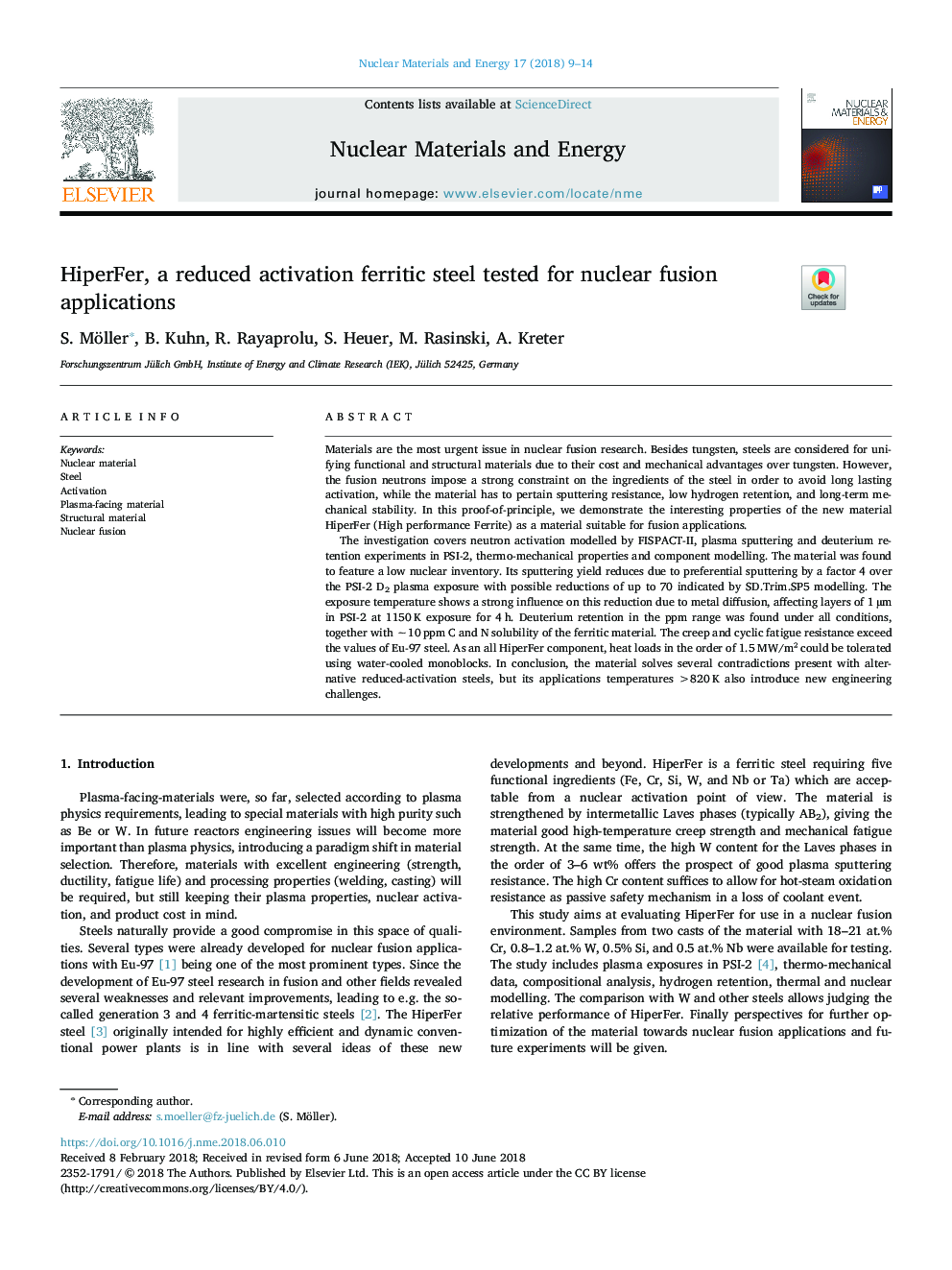| Article ID | Journal | Published Year | Pages | File Type |
|---|---|---|---|---|
| 7987191 | Nuclear Materials and Energy | 2018 | 6 Pages |
Abstract
The investigation covers neutron activation modelled by FISPACT-II, plasma sputtering and deuterium retention experiments in PSI-2, thermo-mechanical properties and component modelling. The material was found to feature a low nuclear inventory. Its sputtering yield reduces due to preferential sputtering by a factor 4 over the PSI-2 D2 plasma exposure with possible reductions of up to 70 indicated by SD.Trim.SP5 modelling. The exposure temperature shows a strong influence on this reduction due to metal diffusion, affecting layers of 1â¯Âµm in PSI-2 at 1150â¯K exposure for 4â¯h. Deuterium retention in the ppm range was found under all conditions, together with â¼10â¯ppm C and N solubility of the ferritic material. The creep and cyclic fatigue resistance exceed the values of Eu-97 steel. As an all HiperFer component, heat loads in the order of 1.5 MW/m² could be tolerated using water-cooled monoblocks. In conclusion, the material solves several contradictions present with alternative reduced-activation steels, but its applications temperatures >820â¯K also introduce new engineering challenges.
Related Topics
Physical Sciences and Engineering
Energy
Nuclear Energy and Engineering
Authors
S. Möller, B. Kuhn, R. Rayaprolu, S. Heuer, M. Rasinski, A. Kreter,
